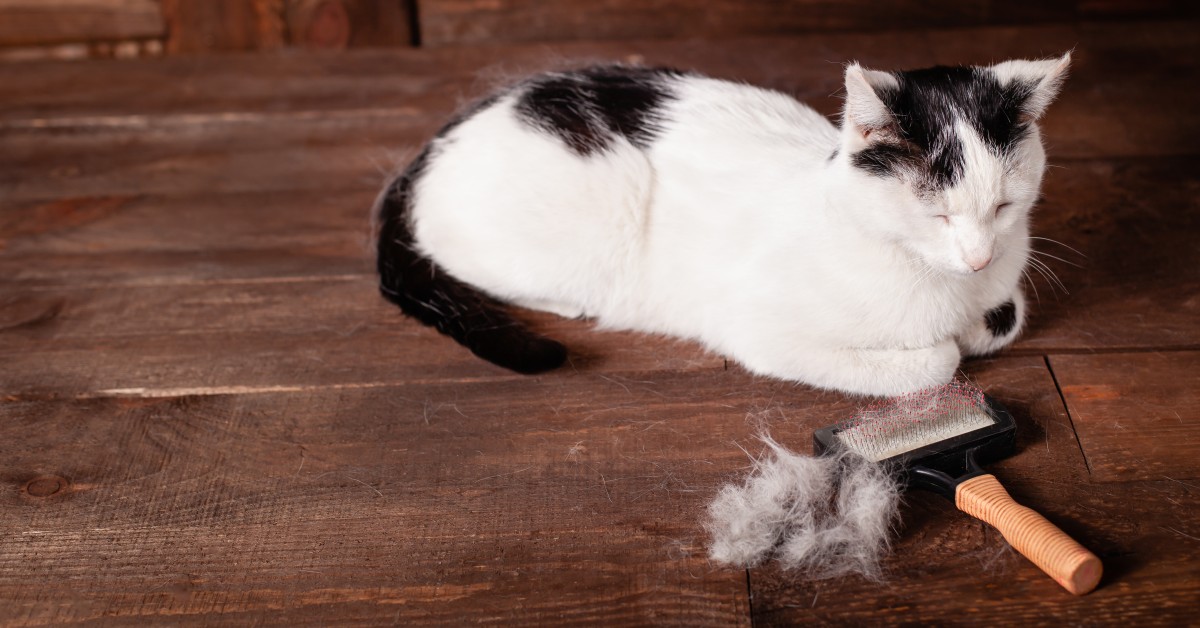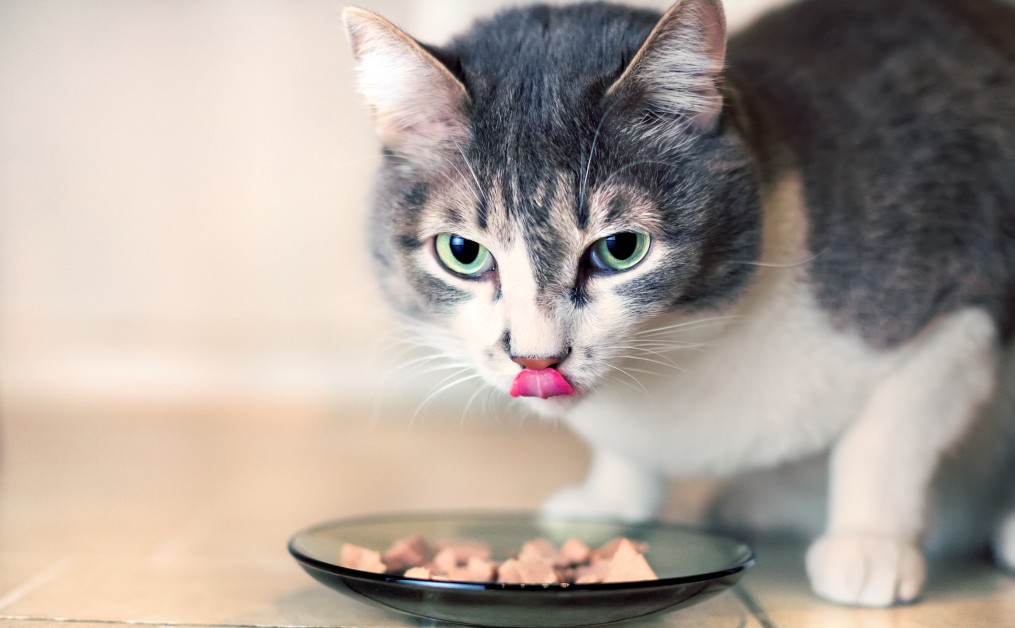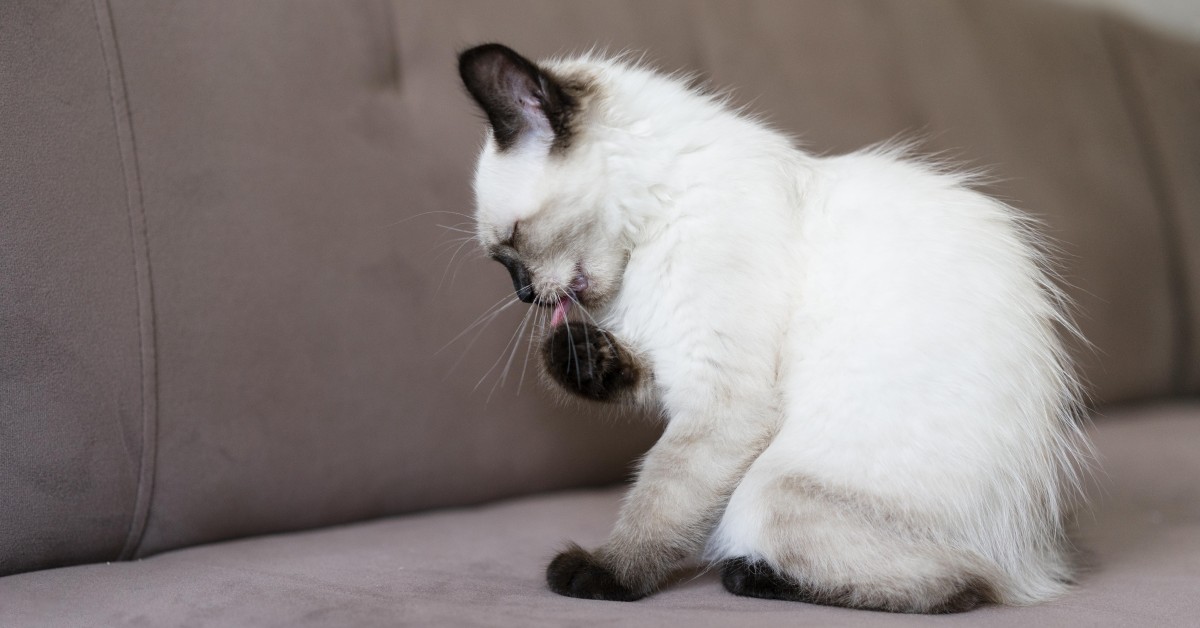Tips on Handling Cat Shedding
While shedding is a natural process for cats, there are ways to minimize the mess and reduce the burden it puts on owners.

Cat hair can be a major nuisance, often collecting in corners of the room, on your clothes, or even regurgitated in the form of “hair balls.” While sometimes unpleasant, cat shedding is a common occurrence. About once or twice a year, usually in the spring and fall, your cat may experience intense periods of shedding. The rest of the year, your pet may shed lesser amounts of hair as a way to maintain a healthy coat and regulate body temperature. If your cat’s shedding is becoming a problem, consider ways to reduce the stress and ease the mess..
Cat Shedding: What’s Normal, and What’s Not?
If you have a cat, whether short-haired or long-haired, chances are it sheds. This natural process takes place as a way to remove dead or damaged fur and maintain a healthy coat. While cats can shed for no reason at all, many factors can influence how much or little these animals lose hair. Breed, diet, overall health, and the season are some of the biggest factors that affect shedding in cats. Allergies, stress, and certain medical conditions also play key roles.
The average cat has between 60,000 and 120,000 hairs on their body, each in different stages of growth or decline. Most healthy felines will lose anywhere from 100 to over 1,000 hairs a day. So, how do you know if your cat is shedding too much? Look for certain clues that your pet’s shedding issue may have an underlying cause. Consult with your vet if you find your cat licking or chewing the same spot, biting or scratching at themselves more often, or rubbing up against things, especially hard surfaces. Also, take note of any changes in the appearance of your cat’s coat.
Some potential health problems that could impact your cat’s coat, resulting in shedding, include:
- Skin infections – Fungal or bacterial skin infections can damage your pet’s coat and cause extreme shedding.
- Parasites – Fleas, mites, and other parasites can cling to your pet’s skin and cause havoc, resulting in hair loss. If you see your pet scratching itself more often, schedule a vet visit.
- Allergies – Many cats experience allergies to certain foods, products, biting insects, or things in the environment, all of which can contribute to shedding.
- Disease – Certain diseases could cause your cat to shed more often, such as liver, kidney, thyroid, or adrenal gland disease. In addition, some types of cancer can lead to hair loss in felines.
- Behavioral Disorders – If your cat has developed a behavioral disorder due to stress or other reasons, it could prompt him to excessively lick and chew, resulting in fur loss.
Solutions for Managing Shedding in Cats
While there’s nothing you can do to prevent shedding altogether, you can help minimize the mess and the stress that accompanies it. Start by choosing the appropriate tools, including a brush designed for your cat’s specific hair type. Fine-bristle brushes are best suited for short-haired felines, while a wide-toothed comb can help smooth hair and prevent mats in long-haired breeds.
Regular brushing can help remove dirt, dander, and dead hair from your cat, as well as contribute to a healthy, beautiful coat. The frequency that you brush your pet will depend on its hair length and texture. Short-haired cats generally do well being brushed one or two times a week, while long-haired breeds may need daily brushing sessions to prevent mats and keep shedding at bay.
If you find that your cat is getting hair in places it doesn’t belong, such as the clothes in your closet, block access to these places. Instead, create a place in your home where your cat can feel safe and comfortable. Put a soft towel or blanket where your cat can lie, and that can be washed regularly to limit hair buildup. This will help minimize the amount of hair on furniture and other places in the home.
Next, remember that your cat’s health plays a critical role in how often and how much they shed. Ensure that your pet is well-hydrated to improve their coat and overall health. As many cats don’t drink enough water, find other ways to add moisture to your cat’s diet, such as by offering wet food. Also, evaluate your cat’s diet to see if any essential nutrients are missing. An improper diet can lead to brittle hair that’s more likely to fall out.
Stress is another common factor that influences hair loss. Many different scenarios can stress out a cat, such as a new family member or pet in the home. If you’ve recently moved or changed your pet’s routine, you may find that your cat is more stressed as a result. The use of pheromones can help reduce this stress. Also, take time to comfort your cat and help them feel more comfortable and secure amid changes.
Cat Shedding Too Much? Consult with Your Vet
If you find that your cat is shedding excessive amounts of hair, schedule a visit with your vet. Some medical conditions can lead to sudden hair loss, such as allergies, anxiety, or a reaction to certain medications. Your vet can help you determine if your cat’s shedding is normal or requires further investigation.
Ready to start saving money on pet wellness care?
Then take a look at Mint Wellness, the pet wellness plan that provides fast reimbursement on routine pet care. Save on vaccinations, wellness exams, preventatives, dental, and more!
Learn More


